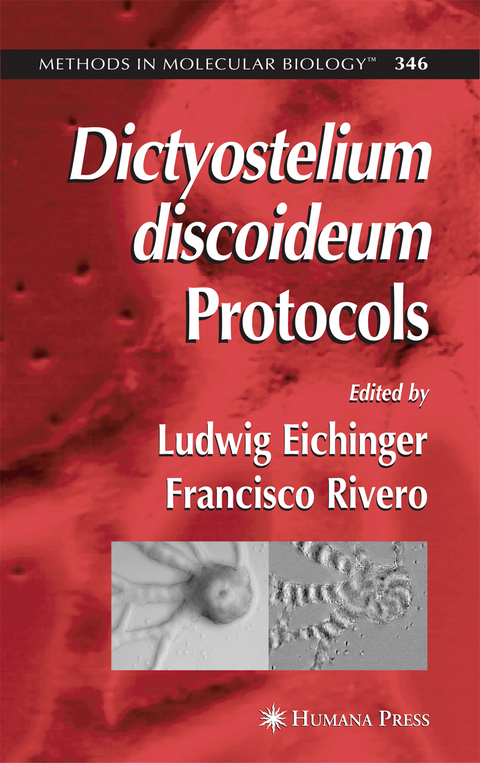
Dictyostelium discoideum Protocols
Humana Press Inc. (Verlag)
978-1-61737-677-1 (ISBN)
The Organism, Community Resources, and Genome-wide Studies.- The Secret Lives of Dictyostelium.- The Genome of Dictyostelium discoideum.- The cDNA Sequencing Project.- dictyBase and the Dicty Stock Center.- Analysis of Gene Expression Using cDNA Microarrays.- Proteomic Analysis of Dictyostelium discoideum.- Basic Methods and Molecular Genetic Techniques.- Cultivation, Spore Production, and Mating.- Parasexual Genetics Using Axenic Cells.- Slug Phototaxis, Thermotaxis, and Spontaneous Turning Behavior.- Purification Techniques of Subcellular Compartments for Analytical and Preparative Purposes.- Generation of Multiple Knockout Mutants Using the Cre-loxP System.- Restriction Enzyme-Mediated Integration (REMI) Mutagenesis.- RNA Interference and Antisense-Mediated Gene Silencing in Dictyostelium.- Imaging and Localization Methods.- Application of Fluorescent Protein Tags as Reporters in Live-Cell Imaging Studies.- Investigating Gene Expression.- Application of 2D and 3D DIAS to Motion Analysis of Live Cells in Transmission and Confocal Microscopy Imaging.- Using Quantitative Fluorescence Microscopy and FRET Imaging to Measure Spatiotemporal Signaling Events in Single Living Cells.- Visualizing Signaling and Cell Movement During the Multicellular Stages of Dictyostelium Development.- Under-Agarose Chemotaxis of Dictyostelium discoideum.- Optimized Fixation and Immunofluorescence Staining Methods for Dictyostelium Cells.- Cryofixation Methods for Ultrastructural Studies of Dictyostelium discoideum.- Dictyostelium as Model Organism.- Analysis of Signal Transduction.- Assaying Chemotaxis of Dictyostelium Cells.- Characterization of Cross-Linked Actin Filament Gels and Bundles Using Birefringence and Polarized Light Scattering.- Quantitative and Microscopic Methods for Studyingthe Endocytic Pathway.- Preparation of Intact, Highly Purified Phagosomes from Dictyostelium.- Assaying Cell-Cell Adhesion.- Periodic Activation of ERK2 and Partial Involvement of G Protein in ERK2 Activation by cAMP in Dictyostelium Cells.- An Improved Method for Dictyostelium Centrosome Isolation.- Epiggenetics in Dictyostelium.- Dictyostelium discoideum as a Model to Study Host-Pathogen Interactions.- Pharmacogenetics.- How to Assess and Study Cell Death in Dictyostelium discoideum.
| Erscheint lt. Verlag | 19.11.2010 |
|---|---|
| Reihe/Serie | Methods in Molecular Biology ; 346 |
| Zusatzinfo | 186 Illustrations, black and white; XVI, 564 p. 186 illus. |
| Verlagsort | Totowa, NJ |
| Sprache | englisch |
| Maße | 152 x 229 mm |
| Themenwelt | Naturwissenschaften ► Biologie ► Biochemie |
| Naturwissenschaften ► Biologie ► Mikrobiologie / Immunologie | |
| Naturwissenschaften ► Biologie ► Zellbiologie | |
| ISBN-10 | 1-61737-677-9 / 1617376779 |
| ISBN-13 | 978-1-61737-677-1 / 9781617376771 |
| Zustand | Neuware |
| Informationen gemäß Produktsicherheitsverordnung (GPSR) | |
| Haben Sie eine Frage zum Produkt? |
aus dem Bereich


